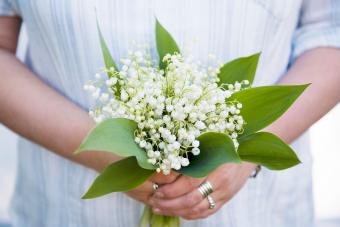
Succulents make great houseplants. They're very low maintenance, as long as you give them plenty of light and avoid over watering them. Succulent plants usually need six or more hours of sunlight per day, so it's best to grow them near a sunny window. Most need to fully dry out between waterings, then be soaked completely. Once soaked, you can ignore them until they're dry again.
If this sounds like your kind of gardening, then succulents just may be the perfect houseplants for you. Many succulents are well-suited to grow indoors, so you have a ton of great options.
Aloe Vera

Beautiful, medicinal, and low maintenance aloe vera (Aloe barbadensis miller) just may be the perfect houseplant. This lovely succulent has long, thick leaves filled with a cooling gel-like snap that's often used to treat sunburn and other types of burns. This plant can easily multiply itself, with healthy plants producing multiple offsets that can fill a container or be transplanted to other pots.
Burros Tail

If you like the idea of growing succulents in a hanging basket, burros (Sedum morganianum) tail is a great option for you. This trailing plant also works great on a shelf or ledge. It gets its common name because its stems and leaves grow to resemble the tail of a burro or similar animal. It's sometimes called donkey's tail or horse's tail for the same reason.
Hens and Chicks

Hens and chicks (Echeveria and Sempervivum) are compact, thick-leaved succulents that grow low to the soil in a rosette shape. They don't grow taller than six inches, but - depending on container size and variety - can spread out to be up to 18 inches wide. There are many hen and chicks varieties, most of which are green. They can develop red tips or an overall reddish hue. Some varieties are bluish, purplish, or grayish.
Jade Plant

Jade plant (Crassula ovata) is a non-spiny succulent with an upright growing habit and thick, waxy leaves. Jade plants grow slowly, but can eventually reach between three and six feet tall indoors. Like other succulents, this plant thrives with a lot of indirect sun, but it can get by with a little less sun than most other succulents.
In Feng Shui, jade plants are believed to bring good luck and wealth.
Panda Plant

Panda plant (Kalanchoe tomentosa) is a thick-leaved succulent with an upright growing habit. It can reach 18 inches or more, but you can keep it smaller by planting it in a small container. This plant has distinctive coloring - its leaves are grayish green with a brown border. They're also covered in small silverish white hairs, which gives them a somewhat fuzzy texture.
Pencil Cactus

If you're in search of a striking and distinctive-looking succulent to grow indoors, pencil cactus (Euphorbia tirucalli) is a great choice. That plant is also commonly called pencil tree or milk bush. It has long, pencil-like branches (hence the common name), and can grow to reach up to six feet tall indoors. Use caution when handling this plant, as the sap inside the stems can irritate your skin.
Prickly Pear Cactus

Prickly pear cactus (Opuntia basilaris) is one of the most recognizable succulents. Its leaves are thick pads with barbed thorns. The gel inside a prickly pear's pads can be used the same way as aloe vera gel. Prickly pear cacti are known for their edible flowers, but they rarely bloom when grown indoors. You can move them outdoors during summer, as they love heat.
Snake Plant

If you're looking for the most ultra-easy care succulent to grow indoors, a snake plant (Sansevieria) just may be the perfect plant for you. Known as a low-maintenance, hard-to-kill plant, this plant - also commonly called mother-in-law's-tongue - can grow almost anywhere. Like other succulents, it prefers bright light, but it's one of the few succulents that can also survive and stay healthy with very little light.
String of Pearls

String of pearls (Senecio rowleyanus), as well as other elegant string succulents, make wonderful hanging or trailing houseplants. They're great for hanging baskets or to allow to trail over the sides of ordinary planters, especially when placed on shelves or in plant stands. They can also be trained to climb.
Zebra Cactus

Zebra cactus (Haworthiopsis fasciata) plants are shaped similar to aloe vera, but their leaves are darker green and have white stripes on them. This plant is sometimes called haworthia or little zebra plant. Take care to avoid confusing it with the tropical houseplant Aphelandra squarrosa, which is commonly referred to as zebra plant.
Grouping Succulents Together
Succulents look great on their own in containers, but you don't actually have to have a separate planter for each one. Succulents pretty much all have the same care requirements and don't need a lot of space between plants, so you can create gorgeous houseplant displays by grouping several types of indoor succulents together in the same container.
When grouping succulents in the same planter, be sure to choose plants that are similar in size or have growing habits that work well together. For example, compact succulents work well planted together or with trailing plants. However, avoid grouping tiny succulents under tall ones that'll block their light. Otherwise, your only limit is your imagination. Get creative when you put together mixed succulent groupings!
Beautify Your Home With the Best Indoor Succulents
The succulents listed above make great houseplants, but they're not the only ones that work well indoors. If you're in search of an easy-care way to beautify your living space with houseplants, you can't go wrong with succulents. Use a succulent-specific potting mix and follow best practices for growing and caring for succulents, including watering them properly.







